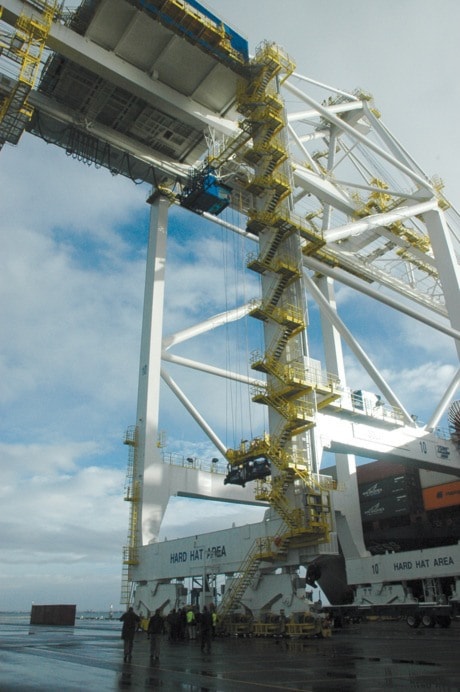Deltaport was up for discussion at a council meeting this week after Port Metro Vancouver announced it is taking steps to expand its Roberts Bank container port.
The Terminal 2 project, part of the port authority’s Container Capacity Improvement Program, would add three more berths to Roberts Bank, with an expected capacity of two million TEUs (twenty foot equivalent units) per year.
The project has been in the works for several years, and the port is currently analyzing the site to determine ground conditions and suitability for development.
On Monday (Feb. 14), council adopted a resolution to schedule face time with federal officials during the Federation of Canadian Municipalities annual convention in June to discuss issues relating to the proposal.
In the past, council had expressed environmental concerns about the $400 million Deltaport Third Berth project, which opened in January 2010.
“We haven’t seen the complete buildout and the growth that’s going to come as a result of the third berth and the completion of the South Fraser Perimeter Road,” said Coun. Scott Hamilton. “We really don’t know what the impacts are and they’re announcing another terminal.”
Hamilton wondered if Delta has already taken its fair share of port development.
“Are they trying to divert a considerable amount of containers from Vancouver to Roberts Bank in order to free up what is extremely valuable waterfront real estate and use it for some other purpose?” he asked.
Given Delta’s experience with the third berth project, city staff said certain concerns must be addressed to ensure the regulatory review process is done efficiently and effectively.
“There must be assurances that a development on the scale of T2 can be undertaken without adverse environmental impacts, and that the cumulative effect of ongoing development in the region is not jeopardizing the marine ecosystem,” said Sean McGill, director of human resources and corporate planning, in a report to council.
McGill said federal regulators should be asked to confirm the project will be assessed by an independent review panel. During construction of berth three, he said there were “issues relating to enforcement of the environmental certificate” and a “lack of clarity” regarding the responsibilities of the various stakeholders.
Local citizens group Against Port Expansion (APE) said this week it is opposed to any further container port development on Roberts Bank, worried the industrialization will destroy wetlands, agricultural land and cause pollution.
The group says Canada does not need the expanded container port now or in the future.
“With the container volume growth experienced by Port Metro Vancouver in 2010 they only handled about the same volume of containers as in 2007,” stated Roger Emsley, executive director of APE in a letter to council.
“Even if Port Metro Vancouver manages a steady annual growth of say five per cent (which could be lower with possible losses for ships diverting via the Suez and Panama canals straight to East Coast ports), then by the year 2020 Port Metro Vancouver may still handle less than four million TEUs annually,” he added.
But the port authority says container traffic through Canada’s Pacific Gateway is expected to double over the next 10 to 15 years, and without substantive improvements a “gap” in capacity could emerge as early as 2017.
“Our mandate and overarching goal is to support growth in Canadian trade,” said Robin Silvester, president and CEO of Port Metro Vancouver. “Roberts Bank is very well positioned to accommodate future trade growth because it’s an established route that offers excellent access to important Lower Mainland markets as well as North American transportation corridors.”
The port authority expects about four million TEUs of additional capacity will be required to meet container demand forecasts in 2030.
The Delta Chamber of Commerce agrees another expansion is necessary.
“The weight of the world’s economy has shifted to the Pacific Rim and we’re a major part of that area,” said chamber chair John Appleby.
“Our only concern is that the supporting facilities be built with a sufficient level of efficiency to allow us to accommodate the increased traffic.”
Appleby is concerned that South Fraser Perimeter Road is being built too small, and the traffic lights will cause major road disruptions.
“We want to see overpasses.”
He hopes the port authority will look at additional ways of carrying materials, such as the Fraser River.
“You just can’t build roads big enough, you can’t build railways big enough, you have to use other methods and other techniques.”
A environmental assessment must occur before construction can begin. Port Metro Vancouver will also carry out seven rounds of public consultations over the next six years.
